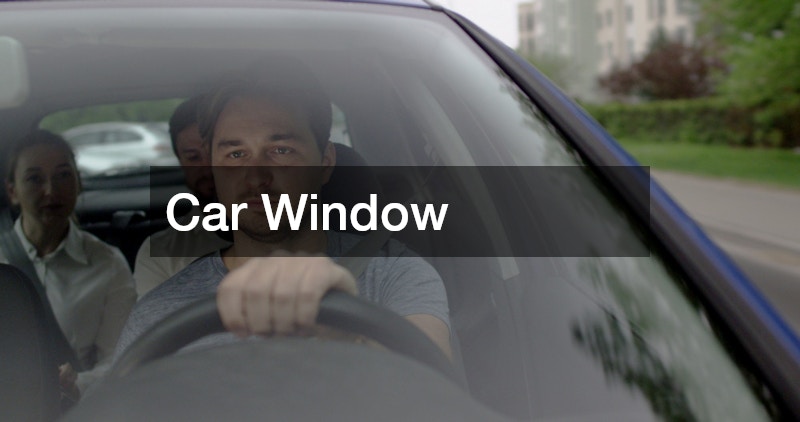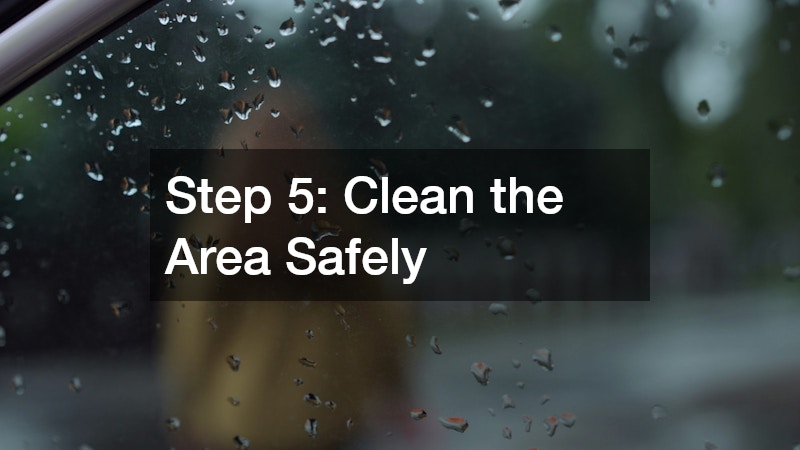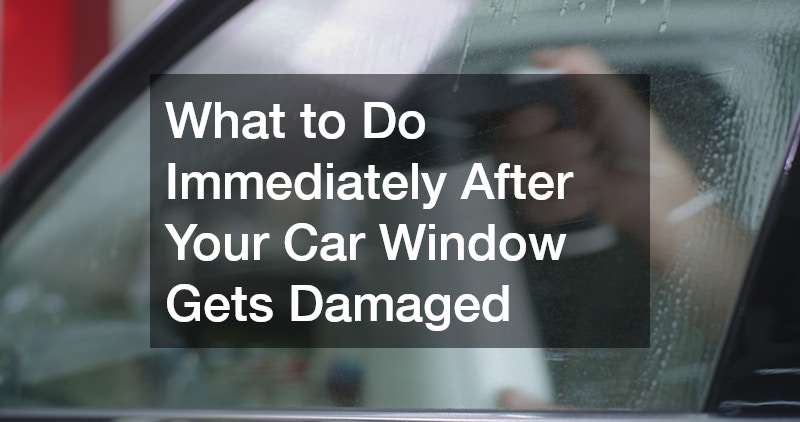- Safety is your first priority—inspect your surroundings before doing anything else.
- Secure the vehicle and clean up glass with proper tools and protection.
- Document the damage with photos for insurance or police reports.
- Temporary repairs can help prevent weather and theft damage until professional help arrives.
- Contact your insurance provider early—coverage may apply depending on your policy.
- Choose a mobile car window replacement with good reviews for reliable and fast service.
- Prevent future damage with parking tips and upgraded glass options.

Finding your car window broken or cracked—whether due to a break-in, vandalism, severe weather, or road debris—can be both stressful and dangerous. Beyond the initial shock, it creates immediate concerns like exposure to theft, water damage from rain, compromised visibility, and even personal safety risks from sharp glass. Acting quickly is crucial to minimize these issues and prevent further damage to your vehicle. From securing your belongings to assessing the damage and scheduling repairs, knowing the right steps to take can make all the difference. This guide will walk you through what to do immediately to protect yourself and your car.
Step 1: Prioritize Safety
Assess the Environment
Before inspecting the damage or getting inside the vehicle, make sure your surroundings are safe.
- Check for immediate threats: Broken glass, exposed wires, or sharp metal can cause injury.
- Avoid busy roads or dark parking areas: Move to a safer spot if needed and if possible.
- Be cautious of theft risk: If you suspect the window was broken in a theft attempt, avoid touching anything inside the car and call authorities.
Look for Injuries
If the car was in motion during the damage, ensure no one is injured from flying glass or an object impact.
- Check for cuts, scrapes, or eye injuries.
- Seek medical attention immediately if needed.
Step 2: Secure the Vehicle
A broken window leaves your vehicle vulnerable to theft and the elements. Take these measures to minimize exposure:
Remove Valuable Items
Thieves often target vehicles with visible electronics, wallets, or bags.
- Take anything valuable out of the car immediately.
- Move the vehicle to a secure, well-lit area or a garage if available.
Close Remaining Windows and Doors
Make sure all other entry points are secure to limit risk.
Step 3: Document the Damage
Before cleaning or covering the window, take clear photos for insurance, police reports, or repair service estimates.
What to Capture:
- Wide shots of the vehicle showing the damaged window in context.
- Close-ups of the damage, including cracks, missing glass, or broken locks.
- Interior shots, especially if water, dirt, or stolen items are involved.
Take pictures from multiple angles and include timestamps if your phone allows it.
Step 4: Report the Incident (if necessary)
If your car window damage is due to vandalism, theft, or an accident involving another party, filing a police report may be required.
When to Call the Police:
- If valuables were stolen
- If the vehicle was broken into in a public area
- If your insurance provider requires a police report to process a claim
Provide the officers with:
- Your vehicle registration
- Driver’s license
- List of missing items (if applicable)
- Any camera footage (dash cam or nearby security)
Request a copy of the report for insurance documentation.
Step 5: Clean the Area Safely

Broken glass can be dangerous. Take time to clean up carefully before using the vehicle again.
Safety Gear Needed:
- Heavy-duty gloves
- Closed-toe shoes
- Safety glasses (optional but recommended)
Cleaning Steps:
- Remove large glass pieces by hand, placing them in a strong paper or cardboard box.
- Use a vacuum with a hose attachment to clear smaller shards from seats, floor mats, and vents.
- Wipe surfaces with a damp cloth to remove fine debris.
- Dispose of glass properly—not in your household trash unless secured.
Avoid driving until the cleanup is complete, especially if glass is near the pedals or driver’s seat.
Step 6: Make a Temporary Cover
A temporary seal protects your car from rain, dirt, or intruders until you get it fixed.
Materials You Can Use:
- Heavy-duty plastic sheeting or trash bags
- Clear packing tape or duct tape
- Cardboard (not weatherproof but better than nothing)
- Emergency window film (if you have it in your car kit)
How to Do It:
- Wipe the area clean to help tape adhere better.
- Cover the opening from the inside of the car for better waterproofing.
- Stretch plastic taut and tape it securely on all sides.
- Double-layer for durability if heavy rain or travel is expected.
Note: Never use plastic wrap that blocks visibility if it’s the driver or passenger side window.
Step 7: Contact Your Insurance Provider
Depending on your coverage, window damage might be fully or partially covered under comprehensive auto insurance.
Questions to Ask:
- Is window damage covered under my current policy?
- What is my deductible?
- Do I need a police report?
- Is there a preferred repair partner I must use?
If your damage qualifies, your insurer may schedule a mobile repair or send you to an approved shop. Keep all documents and receipts.
Step 8: Schedule a Professional Repair or Replacement
Fixing your window quickly prevents bigger problems like water intrusion, mold, or further theft. Choose a reliable auto glass specialist for long-term peace of mind.
Repair vs. Replacement
- Minor chips or cracks: Can often be filled with resin, especially in non-critical areas.
- Extensive damage or shattered glass: Requires full replacement.
Choose a mobile car window replacement with good reviews if you want to avoid driving your damaged vehicle. They’ll come to your home or office, saving time and reducing risk.
Questions to Ask Your Auto Glass Service:
- Do you use OEM or high-quality aftermarket glass?
- What is the warranty on the installation?
- Will you clean up broken glass during the service?
- Are you licensed and insured?
Step 9: Prevent Future Damage
Some car window damage is unavoidable, but these steps can reduce your risk moving forward.
Parking Tips:
- Park in garages or well-lit areas when possible.
- Avoid parking under trees or construction zones.
- Use covered parking during hail-prone seasons.
Protective Measures:
- Use window security film to increase glass strength.
- Tint windows for UV protection and to make valuables less visible.
- Remove items from view, even chargers or cords, which can tempt thieves.
Step 10: Consider Upgrades
If you’re replacing your window anyway, ask your installer about enhanced options that could benefit your car in the long run.
Options to Explore:
- Tempered glass: Breaks into safer chunks if shattered.
- Laminated security glass: Holds together even after impact.
- Factory-tint replacement: Offers a cleaner look and UV protection.
- Rain-repellent coatings: Help maintain visibility.
These upgrades may cost more up front but can boost your vehicle’s safety, comfort, and resale value.
Understanding Insurance Coverage for Window Damage
Not all car owners know whether their insurance covers window damage—and that confusion can delay repairs or lead to unexpected costs. Taking a few minutes to understand your coverage can save you both time and money.
Key things to check:
- Comprehensive coverage typically includes non-collision damage like vandalism, storm debris, or theft.
- Deductibles: Some policies require a deductible before coverage kicks in, which might be higher than the cost of repair.
- Full glass coverage add-ons: Some insurers offer special glass policies that cover repairs or replacements with no deductible.
- Filing a claim: Document the damage, get a repair estimate, and check whether a claim will affect your premium.
Knowing your options allows you to make a smart financial decision and avoid paying out-of-pocket when you don’t have to.
Temporary Fixes to Secure Your Vehicle Before Repair
If professional repair isn’t immediately available, securing your car temporarily is important to protect against weather, theft, or further damage.
How to safely cover a broken window:
- Use clear plastic sheeting or a heavy-duty garbage bag and secure it with waterproof tape from the inside of the car.
- Avoid duct tape on paint—it can peel off paint when removed. Use painter’s tape or automotive masking tape if sealing from the outside.
- Remove broken glass carefully before applying any covering.
- Do not drive at high speeds with a makeshift covering, especially if it’s on a side window.
This quick fix keeps your car protected until you can get proper service.
How to Choose the Right Auto Glass Repair Service
Choosing a trustworthy repair shop is just as important as the fix itself. A poor-quality job could lead to leaks, poor visibility, or safety issues.
What to look for in a reputable service:
- Certified technicians who follow OEM or industry standards
- Free quotes and warranty on workmanship
- Flexible service options (mobile or in-shop)
- Customer reviews and ratings on platforms like Google or Yelp
- Quick response time and availability of OEM or OEM-equivalent parts
If you’re in a hurry, look for a mobile car window replacement with good reviews that can come to your home or office.
Final Thoughts
Dealing with a damaged car window can feel overwhelming, but following a smart, step-by-step approach helps you regain control quickly. From securing the vehicle to choosing the right repair option, each decision plays a role in protecting your safety and investment.
A trustworthy repair provider, especially one offering mobile services and a warranty, can make the process fast and stress-free. Acting quickly also protects your car’s interior and value.
